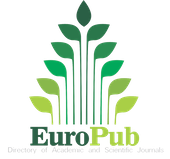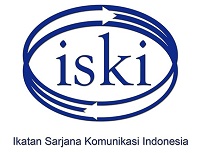Identity on Private Universities’ Billboards in Yogyakarta
Abstract
This research discusses identity as the visual means of private universities to attract prospective students. The data was collected by documenting billboard advertisements located on the arterial road of the City of Yogyakarta that contain visual and linguistic aspects. The gathered data are four billboards of private universities. Applying the multimodal analysis of Gunther Kress and Theo van Leeuwen, this study examines the billboard text to understand the visual and linguistic aspects as well as the relation between them to construct the commodification of education discourses. This research has found that identity becomes a highlighted aspect of the billboards of private universities. The visualization of the identity appears as on physical characters and attributes wore by the students or the models. There are three identities generally appearing, (1) university identity, through the alma mater jacket; (2) tribal/ethnic identity, through the physical appearance of the models; and (3) religious identity, through the fashion style. The slogans—e.g. ‘Welcome, the Smart and Humanist Generation’ and Excellent, Inclusive, Humanist, [with] Integrity’—written on the billboards, from the perspective of linguistic, represent the ideology of the educational institutions. The slogan is not only an enhancer but also a means to build and modify the meaning of the advertisement. Furthermore, it also becomes the representation of what kind of higher-education services are offered by the institution. The modification of the message through identity issues shows exclusivity, while the cultural identity indicates the inclusivity on the campus.
Keywords
Full Text:
PDFReferences
Ademilokun, M., & Olateju, M. (2016). A Multiodal Discourse Analysis of Some Visual Image in the Political Rally Discourse of 2011 Electioneering Campaigns in Southwestern Nigeria. International Journal of Society, Culture and Language, 4(1), 1–19.
Banda, F., & Oketch, O. (2011). Localizing HIV/AIDS Discourse in a Rural Kenyan Community. Journal of Asian and African Studies, 46(1), 19–37.
BBC. (2016). Kisah di Balik Penurunan Baliho Mahasiswi Berhijab. Kisah di Balik Penurunan Baliho Mahasiswi Berhijab
Cheong, Y. Y. (2004). The construal of ideational meaning in print advertisement. In Multimodal discourse analysis: Systemic-functional perspectives.
Collier, M. J. (2015). Cultural Identity and Intercultural Communication. In L. A. Samovar, A. Larry, & R. Porter (Eds.), Intercultural Communication: A Reader (14th ed., pp. 53–61). Cengage.
Cook, G. (2001). The Discourse of Advertising. In The Discourse of Advertising. https://doi.org/10.4324/9780203978153
Haryono, S. R., & Putra, D. K. S. (2017). Identitas Budaya Indonesia: Analisis Semiotika Roland Barthes Dalam Iklan Aqua Versi “Temukan Indonesiamu.” Acta Diurna, 13(2), 67-88.
Ikaria-Maina, N. (2014). Discourse of Advertising: Reference to Kiswahili and English Adverts in Kenyan Media. International Journal of Science and Research (IJSR), 3(11), 1562–1568.
Jawapos. (2018). Predikat Jogja Sebagai Kota Pendidikan Dipertaruhkan. https://www.jawapos.com/jpg-today/09/03/2018/predikat-jogja-sebagai-kota-pendidikan-dipertaruhkan/
Kasali, R. (2002). Manajemen Periklanan, Konsep dan Aplikasinya di Indonesia. Grafiti.
Kottler, P., & Armstrong, G. (2009). Prinsip-Prinsip Pemasaran. Ed. 12, Jilid 1. Jakarta: Erlangga.
Kress, Gunther;, & Leeuwen, T. V. (2006). Reading Images The Grammar of Visual Design-second edition. In Routledge.
Kress, Gunther. (2013). Multimodal discourse analysis. In The Routledge Handbook of Discourse Analysis. https://doi.org/10.4324/9780203809068-10
Kumparan. (2018). Pendaftar PTN di Yogyakarta Jalur SBMPTN Meningkat 3000 Peserta. https://kumparan.com/tugujogja/pendaftar-ptn-di-yogyakarta-jalur-sbmptn-meningkat-3-000-peserta
Lupiyoadi. (2011). Manajemen Pemasaran Jasa Teori dan Praktik. In Salemba Empat. https://doi.org/10.1002/cb.84
Mosco, V. (2009). The political economy of communication. In The Political Economy of Communication. https://doi.org/10.4135/9781446279946
O’Halloran, K. L. (2004). Multimodal Discourse Analysis: Systemic Functional Perspective. In K. L. O’Halloran (Ed.), Multimodal Discourse Analysis: Systemic Functional Perspective (pp. 1–7). Continuum.
OAAA. (2017). 7 OOH Trends in 2017. http://oaaa.org/DesktopModules/SearchBoost/DownloadDoc.ashx?filepid=0&file=7564
Pitaloka, D. A. (2016). Universitas Sanata Dharma Tolak Turunkan Baliho Mahasiswi Berhijab. Rappler. https://www.rappler.com/indonesia/berita/155062-sanata-dharma-baliho-mahasiswi-berjilbab
Putri, L. A. (2016). Representasi Kebebasan dalam Iklan Televisi: Analisis Wacana Multimodal Iklan Televisi Tri Versi Bebas Itu Nyata, A Mild Versi Manimal Dan Fair & Lovely.
Rini, G. . (2018). Peningkatan Top Of Mind Melalui Frekuensi Penayangan, Daya Tarik Pesan dan Waktu Penayangan Iklan. Media Ekonomi, 18(2), 95–108.
Ristekdikti. (2017). Kopertis Wilayah V-DI Yogyakarta. http://kelembagaan.ristekdikti.go.id/index.php/kopertis-wilayah-v-d-i-yogyakarta/
Rohmiati. (2010). Penggunaan Identitas Etnik dalam Iklan Televisi. Jurnal ISIP, 37–47.
Samovar, L. A., Porter, R. E., McDaniel, E. R., & Roy, C. S. (2015). Communication Between Cultures. Cengage.
Sinar, T. . (2012). Teori & Analisis Wacana Pendekatan Linguistik Sistemik Fungsional. Mitra.
Sopandi, E. (2011). Strategi Promosi Penerimaan Mahasiswa Baru untuk PTS(Tinjauan Atas Kegiatan Promosi Pts Di Jawa Barat Tahun 2010). Jurnal Manajerial, 10(1), 87–101.
Sulastri, & Ronidin. (2014). Fenomena Bahasa Baliho Sebagai Identitas Diri Tokoh Cerminan Karakter Budaya : Kajian Semiotika. Jurnal Sosioteknologi, 13(1), 48–59.
Susanto, E. H. (2014). Dinamika Pesan Iklan. Jurnal Komunikasi Universitas Gunadarma, 6(2), 1–9.
van Leeuwen, T. (2005). Introducing Social Semotics. Routledge.
DOI: https://doi.org/10.29313/mediator.v13i2.6519
Refbacks
- There are currently no refbacks.

This work is licensed under a Creative Commons Attribution 4.0 International License























